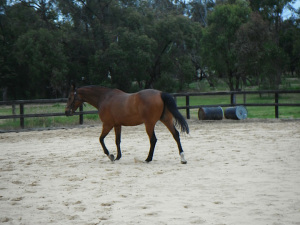SACROILIAC 2
Function of the SIJ:
The purpose of the SIJ is to transfer the thrust generated by the hind legs to the vertebral column. Considering this fact, the size of the joint is relatively small underlining the need for a very tight structure. This is also why the structure of the SIJ is so strong, and the movement in this area is very limited. The joint is designed for gliding movements. It is also designed for multidirectional movements- however the range of movement is miniscule and strongly resisted by the system of ligaments.
Injuries to the SIJ:
Recent research has suggested that Sacroiliac joint dysfunction (SIJD) is primarily a training disease. It may result from repeated ‘traumas’ rather than a single event – in that it is an outcome of repetitive abnormal stresses. In a few instances, dysfunction can occur from direct trauma. As with any joint, it is possible to sprain or overstretch the joint and its supporting ligaments.
Diagnosis, Signs and Symptoms:
No single manual test indicates for certainty the presence of SIJD. The diagnosis for SIJD is hard because the SIJ is out of reach of manual palpation. The joint is deep under the ilium and the very large mass of middle gluteal muscles, although Ultrasound, and Scintigraphy are now available in aiding diagnosis.
The following can also be helpful in making a diagnosis:
The first signs may be a loss of performance, reluctance to work or move forward, and mild lameness. The lameness may be unilateral or bilateral, or shifting from one side to another depending on whether one or both sides are involved. There is pain, so therefore there is a reluctance to move the hind legs. The horse will demonstrate short strides and if a jumper, may refuse to jump. The pain may subside, but a permanent limitation of normal leg movement may remain.
There can be behavioural changes- as the horse protects his body against physical pain.
Other signs or symptoms of SIJD can be:
The horse resists transitions
The horse swishes the tail when ridden
The horse drags his toes of the hind limbs
The horse is more comfortable taking one canter lead over another –if wanting to canter at all – may have difficulty in picking up the canter, in other words –preferring to walk and trot rather than canter.
Uneven hind-end take off when jumping.
Crow hopping
Cold- backed
The horse finds it hard to pick up hind feet for the farrier
History of hock soreness
Rider feels crooked, or saddle slips to one side
The rider is therefore probably the best therapy since the stability of the SIJ is directly related to the correctness of the horse’s locomotion. This will require coordination of the main back muscles of the horse and vertebral column, through a series of exercises performed in hand and under saddle.
For example: a slow walk in hand (one step at a time), a slow trot working towards the horse’s natural cadence (no pushing the horse to a so called ‘forward trot’)Lateral exercises completed correctly, like shoulder fore and shoulder in. The rider is focusing on recreating proper coordination and power between all the muscles acting on creating stability in the SIJ.
I have not gone into details here, but this is where also sports massage and other therapeutic modalities can help in the process of recovery in the horse. (No doubt it helped, and is helping Toba in his recovery).
Perhaps talk to a therapist in your area about your horse if they have a similar problem. The above signs and symptoms can also occur in other conditions. Note: Always consult a vet first if in doubt about a diagnosis
“A horse athletically prepared for the physical demand of the performance, remains sound” JLC (2)
Kerryn Parker
20/07/2013
REFERENCES:
- Blackwell, J ‘Basic Massage Techniques’ , Fineline printing ’Equistricare manual’ 2011
- (2) Cornille, J.L “Science of Motion” http://www.scienceofmotion.com
- Denoix,J, M Pailloux JD ‘Physical Therapy and massage for the horse’, Manson publishing 2011
- (1) McGowan C, Goff L, & Stubbs N ‘Animal Physiotherapy’ Blackwell publishing 2007
- Kamen,Dr.Daniel R ‘the well adjusted horse’, Brookline Books Inc., 1999
- Rooney, Dr. J ‘The lame horse’ , A.S Barnes & Co. Inc., 1974
- Stashak Ted S ‘Practical guide to Lameness in horses’ Blackwell publishing 2006
- Tucker, R ‘Where does my horse hurt’ Trafalgar Square books, Vermont 2011
EQUINE REMEDIAL SERVICES
http://www.equineremedialservices.com.au
ph: 0432 105 495
e: kerrynparker@hotmail.com
ABN: 51810845732
